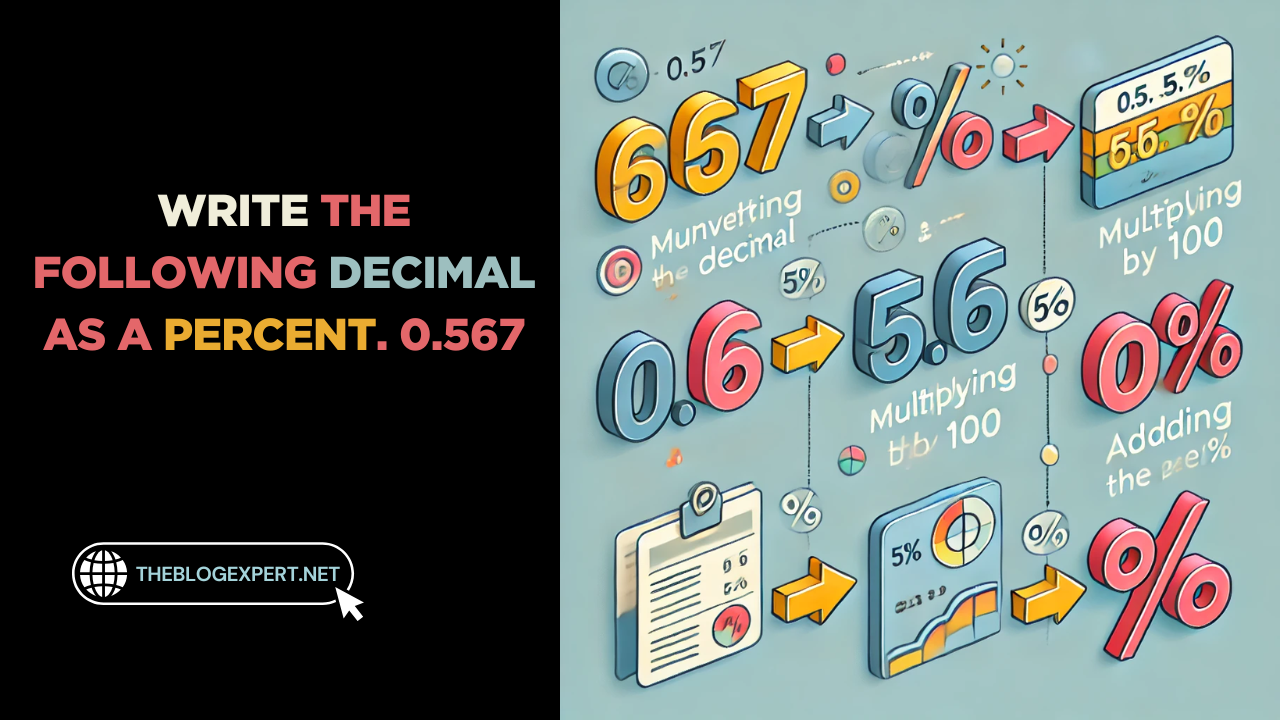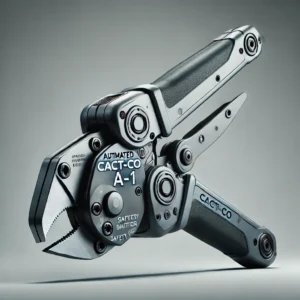Write The Following Decimal As A Percent. 0.567
Converting Decimal As A Percent is a useful talent that can be used in lots of regions, like math, money, and even technological know-how. You would possibly have a decimal range, like 0.567, and want to realize what it would be as a percentage. This is an clean system that entails multiplying the decimal by using one hundred and including a percentage symbol (%). Whether you are trying to calculate a reduction or recognize a survey end result, knowing a way to convert decimals to percentages could make numbers an awful lot easier to understand. Let’s dive into a way to do that little by little!
What is a Decimal?
A decimal is a way to expose elements of an entire quantity. For example, in preference to saying “1/2,” we can use 0.Five, that’s a decimal. Decimals are made up of an entire quantity and a fragment of a whole. The digits after the decimal point constitute parts of one. So, 0.567 means 567 thousandths of a whole. Decimals are smooth to work with and are regularly used in everyday conditions like cash, measurements, or chances!
What is a Percentage?
A percentage is a way to express a part of something out of one hundred. For instance, 50% method 50 out of a hundred, or 1/2 of the entire. We often use chances to evaluate things, like discounts or test ratings. To turn a decimal into a percentage, we multiply it by means of one hundred and add the percent symbol (%). It’s a easy and useful tool to recognize how a good deal of something there’s in relation to a whole!
How Do You Convert 0.567 to a Percentage?
To convert 0.567 into a percentage, follow these simple steps:
Multiply the decimal by 100. So, 0.567 × 100 = 56.7.
Add the percent symbol (%). Thus, 0.567 as a percentage is 56.7%. It’s that easy! This method works for any decimal you need to convert into a percentage. Just remember to multiply by 100 and add the percent sign!
Why is Converting Decimal As A Percent Important?
Converting decimals to probabilities is crucial due to the fact possibilities make it simpler to examine values. For example, if you get a 56.7% on a take a look at, you can fast apprehend your rating out of one hundred. In finance, percentages assist calculate reductions, interest costs, and savings. In data evaluation, probabilities simplify the contrast of numbers and traits. Overall, knowledge how to convert decimals to probabilities will let you in lots of actual-lifestyles situations, from buying to information facts.
What Are the Common Mistakes When Converting Decimals to Percentages?
When changing decimals to possibilities, a few common mistakes encompass forgetting to multiply the decimal by way of one hundred. For instance, in case you absolutely write 0.567% in preference to fifty six.7%, it’s incorrect. Another mistake is misplacing the decimal point, like writing 567% in place of 56.7%. To avoid those mistakes, always double-check your calculation and make sure to add the percent symbol (%) effectively after multiplying by way of 100!
What Are Some Examples of Decimal to Percentage Conversions?
Let’s look at a couple of examples:
0.25 as a percentage: Multiply by 100 → 0.25 × 100 = 25%.
0.Eight as a percent: Multiply by way of a hundred → 0.Eight × a hundred = eighty%. These examples show the way to quick convert decimals to chances. Whether you’re calculating reductions or understanding a take a look at rating, the technique is the same: multiply the decimal via one hundred and add the percent symbol (%) to get your answer!
Also read: Why Does the First Defendant Die a Lot in Legal Cases
How Can You Convert Other Decimals to Percentages?
Converting other decimals to percentages follows the same simple rule. For example:
0.03 as a percentage: Multiply by 100 → 0.03 × 100 = 3%.
5.45 as a percentage: Multiply by 100 → 5.45 × 100 = 545%. For decimals greater than 1, just multiply by 100 and add the percent symbol (%). This method works for any decimal, whether it’s a small number or larger than 1. The process stays the same every time!
What’s the Difference Between Percentages and Proportions?
Percentages and proportions are related, however they’re now not the identical. A percentage expresses a part of 100, like 50% meaning 50 out of a hundred. A percent shows part of the whole however without the use of one hundred. For instance, if three out of 5 university college students like pizza, that’s a percentage (3/5). To convert a share to a percentage, you multiply it through 100. So, three/five = zero.6, and 0.6 × 100 = 60%.
Can You Convert Large Numbers or Complex Decimals to Percentages?
Yes, you can convert large numbers or complex decimals to percentages! For example:
12.456 as a percentage: Multiply by 100 → 12.456 × 100 = 1245.6%.
0.00045 as a percentage: Multiply by 100 → 0.00045 × 100 = 0.045%. The process is the same: multiply by 100 and add the percent symbol (%). Whether your decimal is large or very small, the conversion remains simple and straightforward.
How Does Converting Decimals to Percentages Help in Data Analysis?
In statistics evaluation, converting decimals to probabilities allows make statistics less difficult to interpret and evaluate. For example, possibilities show the percentage of a whole in a simple way, like seeing what number of humans accept as true with a survey assertion. It also facilitates in comparing large datasets, like income growth or marketplace percentage. By using probabilities, analysts can fast become aware of tendencies and make experience of complex numbers. This makes statistics a lot clearer and less complicated to speak.
How Do You Interpret a Percentage Increase or Decrease?
A percentage boom indicates how a good deal something has grown, whilst a percentage decrease shows how much some thing has gotten smaller. To calculate an growth, subtract the antique variety from the new wide variety, divide through the old quantity, and multiply by using one hundred. For a lower, do the equal but observe that the value has dropped. For instance, if a charge went from $50 to $60, the percentage boom is 20%. This facilitates easily see modifications in prices, values, or performance.
What Are Some Tools to Help Convert Decimals to Percentages?
There are many on-line gear and calculators that will help you convert decimals to probabilities speedy. These tools assist you to input a decimal range, and they right away come up with the corresponding percentage. Some famous alternatives encompass decimal to percent calculators and apps that assist with math calculations. These gear are useful for saving time, specially whilst coping with large numbers or a couple of conversions. Just search for a dependable calculator online and start changing in a flash!
FAQs
Why is 0.567 expressed as 56.7%?
Multiply 0.567 by 100 to get 56.7, then add the percent symbol to show the percentage.
How do I convert other decimals to percentages?
To convert any decimal to a percentage, simply multiply by 100 and add the percent symbol (%).
What is the simplest way to convert a decimal to a percentage?
Multiply the decimal by 100 and add the percent sign. For example, 0.3 × 100 = 30%.
Conclusion
In end, converting decimals to chances is a easy but important skill. By multiplying the decimal by using a hundred and including the percent image (%), you may without difficulty express elements of an entire. This knowledge is beneficial in many regular conditions, from buying to know-how statistics. Whether you are handling small decimals or massive numbers, the conversion system stays the identical. Practice this talent, and you may locate it helpful for lots math, finance, and real-world packages!




Post Comment